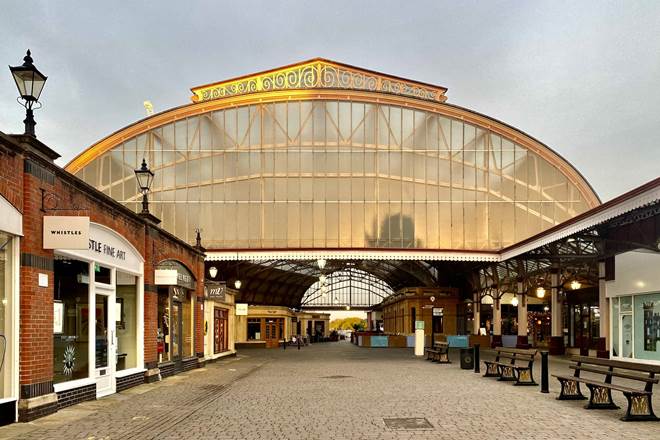The Architecture The Railways Built - Series 2 Episode 3
You can view the episode online here
Windsor Riverside and Windsor Central
What a town Windsor is: steeped in history with streets climbing the hill from the Thames up to the great Windsor Castle, it feels a little like a seaside resort. That castle – or at least one of its past residents, Queen Victoria – is the reason the town has two stations. The two rival railway companies that reached the town vied for her patronage – building two overly-specified stations to win her over.
The programme visited both Windsor & Eton Central (originally built by Brunel for the GWR; today GWR trains still run into it) and Windsor & Eton Riverside – built by Sir William Tite for the London South Western Railway - South Western Railway trains still run into it from Waterloo. A couple of neat facts about the Riverside station: the brickwork on the wall facing Windsor Castle has the monograms of Queen Victoria, Prince Albert – and others including William Tite, the architect. And those extra-tall doors to get to the platforms have a purpose: they were so-designed to allow the soldiers on horseback to ride down to meet the trains without needing to disembark. One of the guides here was from Windsor Tourist Guides.
The area at Windsor & Eton Central built to give shelter for troops waiting at the station
The monogram of Queen Victoria built into the brickwork at Windsor & Eton Riverside station
The massive tall doors to allow troops on horseback to ride into Windsor & Eton Riverside station to meet the Queen
Connel Bridge across Loch Etive, west of Scotland.
Once a branch line railway bridge, it now carries just a road: at one point it carried both! The railway company built this spectacular structure over the loch with a single span due to the depth of the water below.
At one point the company earned extra cash by loading cars on to a flatbed railway wagon and shuttle them across the bridge for a fee – since it cut off a lengthy road diversion around the loch’s shore. But that didn’t last: within a few years a roadway was built along the length of the rail tracks on the bridge, with traffic being kept out of the way of trains with a simple system of signals and traffic lights. With the closure of the branch line, now it’s just road vehicles that cross. The nearest station is Connel Ferry station on Scotrail, just a few hundred metres away.
Gniezno Roundhouses, Poland
A special behind-the-scenes visit to this enormous marshalling yard in Poland with a unique double roundhouse - in the city of Gniezno. During WW2’s Nazi occupation, local people working in the sheds were said to have deliberately slowed down progress on trains to hamper the German’s plans…
You can view the full episode online here
